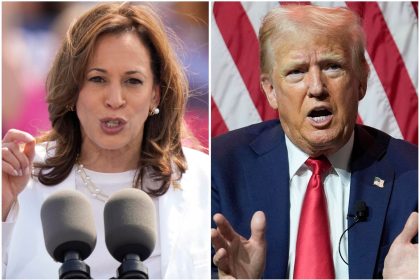Logging onto your bank account and seeing a low balance can be stressful, especially if you’re nowhere near your next payday. If you’re struggling to stay afloat — or even if you’re doing OK but want to be more disciplined with money — a spending diet may help you get on the right track.
Currently, around 1 in 3 (34 percent) Americans say they’re living paycheck to paycheck, according to Bankrate’s Paycheck to Paycheck Survey. If you often find yourself short on money, trimming extra fat from your expenses through a spending diet can help free up funds for savings or other financial goals.
Here we’ll delve into the ways you can put a spending diet to work, along with the potential benefits and drawbacks of following this type of money management strategy.
What is a spending diet?
Similar to watching what you eat to improve your health, a spending diet helps you improve your personal finances in order to live within your means and keep money in the bank.
A spending diet can be defined as taking steps to decrease your expenses. One way to do this is by following a monthly budget that ensures your income exceeds your expenses. A budget can help free up some of your dollars for other wants or needs, or simply to build up savings.
Finding ways to decrease spending, even just small amounts here and there, can really add up, especially at a time when:
- Three-quarters (75 percent) of Americans report they don’t feel financially secure, according to Bankrate’s Financial Freedom Survey.
- More than 1 in 3 (38 percent) U.S. adults say they’d be willing to go into debt for at least one fun purchase, such as travel, dining out or to attend a live entertainment event, according to Bankrate’s Discretionary Spending Survey.
- Nearly half (47 percent) of Americans say money has a negative impact on their mental health, at least occasionally, according to Bankrate’s Money and Mental Health Survey.
A spending diet can be a temporary process, or part of a more ongoing effort to decrease your expenses over time. A key aspect is that it enables you to keep a close eye on your spending to help you meet your financial goals.
How does a spending diet work?
The most straightforward way to go about a spending diet may be creating a monthly budget, which is also often referred to as a spending plan.
For example, say you’re making $4,000 a month, yet you realize you’re spending around $4,300 per month. Creating an itemized budget can help you find places to trim that extra $300 (or more) from your spending.
For instance, maybe you realize you could free up funds by going out to eat less often, or by canceling streaming services or memberships you never use. You might also shop around for auto or homeowners insurance that charges lower rates.
Say you’re able to eliminate $400 in expenses each month. This money can now be used to build up your emergency fund or pay down debt.
Benefits of a spending diet
There are three potential benefits of paying close attention to your finances through a spending diet:
You’ll curb extra spending.
You’re better equipped to live within your means when you identify areas where you can spend less. Common areas where people can often trim their spending include:
- Groceries: The average household spends around $475 per month on food eaten at home, according to the U.S. Bureau of Labor Statistics’ latest Consumer Expenditure Survey.
- Dining out: Americans spend an average of $166 per month, per person, on going out to eat, according to a 2023 US Foods survey.
- Memberships and streaming services: Consumers spend an average of $61 a month on streaming services, according to the 2024 Digital Media Trends Report by the Deloitte Center for Technology, Media & Telecommunications.
- Car insurance: The national average cost for full coverage auto insurance is $212 per month, according to Bankrate’s 2024 Auto Insurance Study.
You’ll avoid binge spending.
When you’re in a money-saving mindset, you’re often less likely to make impulse purchases or to put charges on your credit card that you can’t pay off right away. The benefits of a shopping spree may be outweighed by the peace of mind that comes with having your spending under control.
You’ll stick to a daily regimen.
Staying within established spending limits helps keep you from nickel-and-diming away your money with daily trips to the coffee shop or diner. In fact, over the course of a month, watching your spending every day can really add up to big savings.
Drawbacks of a spending diet
Similar to a no-nonsense nutritional diet, a strict spending diet might not be right for everyone, and you may need to modify your approach as you go along. Problems you might run into include:
It can feel tedious.
Just like counting calories, recording and categorizing every expense can prove tedious. If you’d rather not spend too much time on these details, consider setting up your checking account to automatically categorize your spending. Banks commonly offer this option, and this allows you to tally your spending more easily.
You might get burned out.
Whether or not you find it tedious to record your spending, you might eventually feel burnout. This could lead to spending binges that might even wipe out all your money-saving efforts in a given month. Rather, consider giving yourself a little more leeway, such as a small reward for a week of low spending.
It can take a while to see results.
Establishing a solid budget can take months of tweaking the best ways to allocate money, as well as the right amount to devote to each category. However, if you persist and identify any unhealthy habits and patterns — just like with getting in better physical shape — it will benefit you in the long run.
How to set up a spending diet plan
The easiest way to put your spending on a diet is often to create a budget. You may find it pays to keep your budget simple, or you might decide it’s more helpful to incorporate more details such as subcategories.
Set up a budget
To make your budget, start by listing out your monthly income and expenses. You can write them out using pen and paper, enter them into a spreadsheet or use a handy budgeting app. Determine how much you’re spending on each category by looking through recent bank and credit card statements.
A budget should include everything you’re spending money on, including necessities (such as housing, groceries, transportation and childcare) as well as non-essentials (such as entertainment and visits to the local coffee shop).
Find places to trim spending
Once your monthly budget is set up, now’s your chance to be creative in finding ways to lower spending, where possible. Examples of ways to cut expenses include:
- Cancel any memberships you’re not using.
- Prepare more of your meals at home.
- Consider making more meatless meals to save on your food bill.
- Reduce or eliminate your alcohol consumption, which can have health benefits in addition to saving money.
- Make homemade gifts for birthdays and holidays.
- When taking a vacation, consider a staycation to eliminate hotel and airfare costs.
If you want to be especially creative, consider a no-spend challenge as a way to quickly cut your expenses and add to your savings. Set a goal for how much you can save over a month’s time, and challenge yourself to meet that goal.
Automate your savings
Once you’ve successfully reduced your spending, be sure to divert the freed-up money to where it’s truly needed. Options include putting it into a savings account or paying down credit cards or other loans. If you need to save for emergencies or other financial goals, consider setting up automated transfers every payday from your checking to your savings account.
Automating your savings in this way means you won’t have to manually transfer money between accounts. It can keep you on track with building savings, and it’ll also keep you from making impulse purchases.
“Successful saving is all about the habit, and automating the process of saving is the best way to establish the habit of consistent saving,” says Greg McBride, CFA, Bankrate’s chief financial analyst. “An automatic transfer also gets the money into savings where it is working for you and out of the checking account where it is more easily spent.”
Bank accounts that are good for your financial well-being
Currently, nearly 6 in 10 (59 percent) U.S. adults say they feel uncomfortable with their level of emergency savings, Bankrate’s Annual Emergency Savings Report found. If you don’t have an adequate emergency fund, consider placing money freed up from your spending diet into a high-yield savings account.
Having money in such an account means you’ll have the benefit of earning an interest rate that’s currently outpacing the rate of inflation, and you’ll have peace of mind knowing you have some funds to cover unplanned expenses or a sudden job loss.
Having the right checking account is also important for your finances. This is an account that likely doesn’t require a set minimum balance or eat away at your balance with monthly fees.
What’s more, setting up automated transfers from checking to savings every month can help guarantee you’re adding to your savings — without having to remember to make manual transfers.
Bottom line
Similar to a diet that encourages healthy eating, a spending diet helps you form better habits and provides peace of mind. You’ll be living within your means as you build up savings for emergencies and other important financial goals.
Read the full article here


















